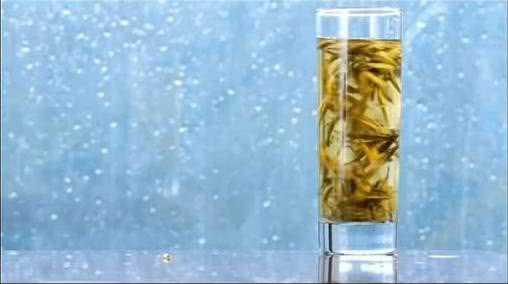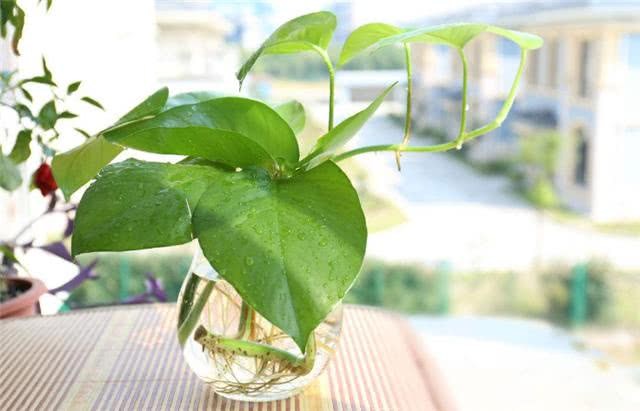The fire was the second death they were forced to experience.

A fire in Brazil has touched the hearts of countless scientists and amateurs-the fire that started on Sunday night burned almost all of the main collection of the National Museum of History of Brazil, and 20 million of the collection was torched. Including a large number of type specimens.
Once the largest collection of insect specimens in South America, it is now in ruins. Many grieving researchers say the disaster reminds them of the Library of Alexandria, once the largest library in the world, built in the third century BC and destroyed in two fires.
The National Museum of Brazilian History after the fire. Picture: Oriental IC
What can museums do except show
The museum is not only an institution for displaying collections, but also an important place for academic collection and research.
The museum is only the tip of the iceberg open to the public, and the backstage with a huge collection is the real treasure house. In the museum with a long history, the warehouse is a huge collection and research materials accumulated by generations of scientists over the past few hundred years.
A corner of the invertebrate specimen warehouse at the National Museum of Natural History. Picture: worms singing in the mountains
People tend to think that people who discover new species are wild explorers, but they are not. In fact, many new species are born in the old specimens of the museum.
However, the number of specimens that scientists can study in their lifetime is limited, and the museum warehouse is filled with a large number of precious specimens that have not had time to study. Especially in this era of rapid extinction of species, traces of many unknown species on this planet may only remain in a museum warehouse; in addition, past research is limited by technical means, which often divides multiple species into one species, thus causing the existence of "hidden species". When researchers use the most advanced techniques to re-study old specimens, they often make different discoveries each time.
These wren specimens have been identified as the same species in the past, but the new study divides them into two. Picture: worms singing in the mountains
Of all the biological specimens, the most precious and irreplaceable is the type specimen, which is also the most costly aspect of the National Museum of History of Brazil.
What is a type specimen?
With regard to type specimens, it all starts with the system of species nomenclature and research methods that we have established over the centuries.
When scientists discover a new species, one or more of the most typical specimens will be selected as the type specimen and become the objective carrier of the scientific name, that is, the "named pattern". After the event, if it is found that they are actually more than one species (such as the previous batch of wrens), the species of the type specimen remains the same, and unlike it, it will get a new scientific name and establish a new type specimen.
The type specimen used by the researchers to describe the new species is called the orthotype, which is the most important and irreplaceable; if there are multiple type specimens, one of them will be selected as the stereotype, and the rest will be the secondary model. Unlike the positive model, the secondary model is not a name-bearing mode and is not as important as the positive model.
For the orthotypic specimens of a certain species of Agrias phalcidon phalcidon, the orthotypic specimens usually have a red label marked "Type" and the secondary models have a yellow label. Picture: Notafly / wikmedia
In addition, there are some special specimens, such as matching (heterosexual specimens used together with positive patterns for the description of new species), group models (publishing new species without using a single specimen but a series of specimens, often occurring before the establishment of the type specimen specification), and so on.
In many cases, newly discovered species are so rare that there is only one specimen-which is especially common in paleontological fossils-and it is only natural that the specimen becomes a positive model, even if it is incomplete.
Incomplete type specimen of Walker's paratosaur (Parasaurolophus walkeri). Picture: missbossy / wikmedia
The importance of the type specimen is irreplaceable. They are the carrier of the scientific name and the specimen of "no doubt this species". The identification characteristics of this species should be based on the type specimen.
If you want to publish a new species, you should first check the positive specimens of the known species of this group to make sure that the new species has not been described. Some lax researchers publish new species without examining the positive model, which has brought a lot of confusion and mistakes to the academic circles.
Type specimens are the most important wealth in the museum's biological collection, enjoy the best preservation conditions, only open to specific personnel, generally will not be lent out. If someone wants to do a taxonomic study or revision of a group, they often have to look at the type specimen, even if it means flying across the ocean. Well-known museums with a large number of valuable type specimens, such as the Natural History Museum in London and the National Museum of Natural History in the United States, welcome many researchers to view the type specimens every year.
James? Specimens collected by Bond (the source of the protagonist's name of James Bond,007) and his academic book Birds of the West Indies. Picture: worms singing in the mountains
An irreparable loss
If a new specimen An is found to be different from specimen B of a known similar species, will it be a new species? Or is specimen A what the species really looks like, while specimen B is misidentified (which is especially common in old specimens), or even B is the hidden new species? In the past, after examining the type specimen, this problem can be easily solved. But now, the difficulties have greatly increased.
A large number of type specimens are reduced to ashes, which is undoubtedly a disaster for scholars who study biological taxonomy.
The brown fluffy spider monkey (Brachyteles arachnoides) endemic to Brazil. Photo: national Museum of History of Brazil
So, do we really lose all the knowledge of these species and the ability to identify them?
There are still some remedies.
Researchers need to carefully review the written records and select a new model from the remaining specimens of the same species. The selection of new models is a very strict and troublesome process. I don't know how long it will take to clean up the mess left by the fire in academia.
This is an easy step for common species that are well studied and have a large stock of specimens. But for species that are extremely rare and have few or only one living specimen, the loss is irreparable-those specimens are destroyed before they begin to be studied, and the knowledge associated with them will disappear forever in the dark.
scene of the fire. Picture: Oriental IC
This is the second death that we are forced to accept.
Spinosaurus aegyptiacus is one of the largest terrestrial carnivores that have ever wandered on earth and is a high-profile star. The stereotyped specimen previously preserved in Munich was destroyed during World War II. But the Egyptian Spinosaurus is also lucky. Researchers are looking for new proof of its existence, and its specimen has enough attention before it is destroyed, which allows the painter to leave an accurate portrait of it.
This time, however, the model of Oxalaiasp., a close relative of the Egyptian spinosaurus, may have been swallowed up by the fire, along with other precious fossils. The protagonists of the tragedy also include 5 million "neglected" insects and other arthropods.
The painting of the orthotypic specimen of Spinosaurus in Egypt. Picture: Ernst Stromer / wikmedia
Now, the National Museum of History of Brazil is looking for visitors to provide information and photos to help them carry out reconstruction work.
To be sure, most of the specimens in the warehouse have not been photographed, painted, or even studied by anyone. Some species may not have been discovered yet, and the habitats of their wild populations have been flattened with the rainforest and turned into rubber plantations, mines or mansions. The proof of their existence has dissipated with the smoke and has been forced to accept a second death.
The disaster occurred in Brazil-a country with high biodiversity and rapid disappearance of rainforests-that destroyed a century of accumulated research. This is a catastrophe of all mankind's knowledge.
"with a history of 200 years, 20 million pieces in the collection have been reduced to ashes." Picture: Lu Brito / wikmedia
After the fire, people may pay more attention to the digitization of museum collections. However, for biological specimens, digitization is still no substitute for physical objects. Photos can not reflect all the details of specimens, and many museum specimens, especially the vast sea of invertebrate specimens, are difficult to be recorded by ordinary equipment, even with expensive microphotography equipment.
Not to mention the museum, which has been abandoned by the local government and does not even have the money to repair fire-fighting installations.
Digitization is just the icing on the cake, not the museum. What can really save all this is the support of the government and society to academic institutions that do not seem to have direct interests, and it is human desire and respect for knowledge.
This article is a special contribution to species Calendar, from the author of species Calendar @ Shenshan Bug Yin.
You might also want to know
Calendar Niang today's avatar
The National Museum of Brazilian History before the fire
- Prev

Understanding natural sunlight withering and indoor withering means that you are beginning to understand white tea.
Among the six major teas, the production process of white tea is the simplest. There are only two processes: withering and drying, in which withering plays a vital role in the quality of tea. Many tea friends have expressed their interest in white tea recently and want to know more about white tea.
- Next

Green turnip, orchid, yellow leaf, you didn't add it, otherwise the yellow leaf can turn green.
Green pineapple and hanging orchid are evergreen all the year round, and maintenance in the living room and bedroom can bring benefits to people's health, and a piece of green can reduce people's fatigue and make people feel close to nature. And very easy to raise, but there are also flower friends.
Related
- Wuhan Hospital Iron Tree Blooming Result Was Instantly Frightened by the Gardener Master
- Which variety of camellia is the most fragrant and best? Which one do you like best?
- What is the small blue coat, the breeding methods and matters needing attention of the succulent plant
- Dormancy time and maintenance management of succulent plants during dormancy
- Minas succulent how to raise, Minas succulent plant pictures
- What are the varieties of winter succulent plants
- How to raise succulent plants in twelve rolls? let's take a look at some experience of breeding twelve rolls.
- Attention should be paid to water control for succulent plants during dormant period (winter and summer)
- Watering experience of twelve rolls of succulent plants
- Techniques for fertilizing succulent plants. An article will let you know how to fertilize succulent plants.

